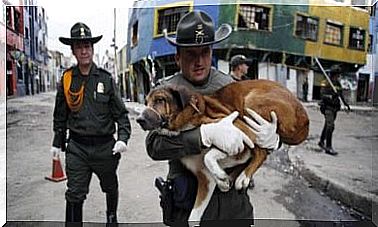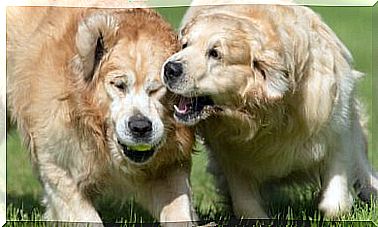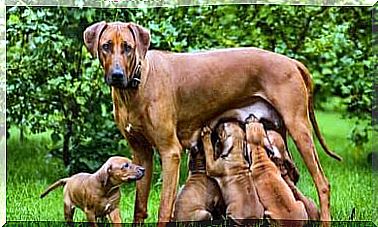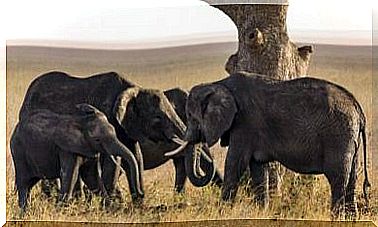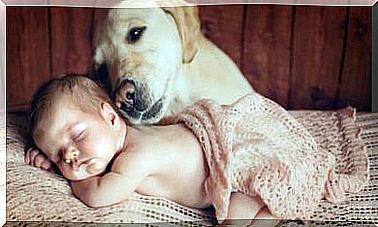The Norwegian Elkhound: The Moose Hunter
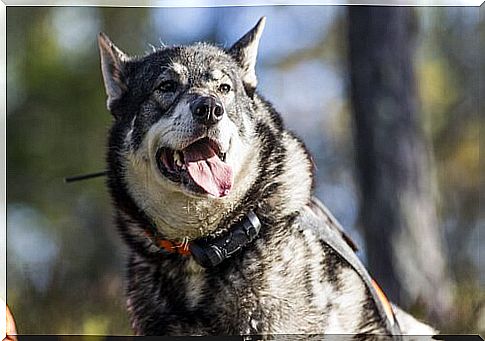
The Norwegian elkhound may look like a crossbred breed of shepherd and Nordic dogs. However, it is a dog that has been following polar hunters for over a millennium. Next, we’ll tell you all about the race.
History
The Norwegian Elkhound is a primitive breed. Archaeological remains of some specimens dating back to more than 40,000 BC have been found. This made it one of the oldest races that are still alive today. They would have followed the Scandinavian hunters for over a thousand years. This dog has been used for hunting large animals, especially moose and bear.
It is a stout dog with a daring personality, a great companion in hunting, because thanks to its nose, it can smell prey from miles away. After locating and chasing her, he tells the owner where his prey is, barking insistently.
The polar explorers introduced him to the American continent, where they were very successful as companion dogs. The good personality of these dogs, together with their beauty and adaptability, make them a great domestic dog.
Characteristics
It has a body very similar to the rest of the sp itz type dogs : square, compact and short. It also has one of the characteristics of this type of breed: the tail wrapped around its back.
He also has a broad head and triangular ears that are raised above his head, while his nose is always black and dark . It has, in general, a distant appearance, although its face is less accentuated and the difference between the skull and the nose is more marked. It is obvious to the naked eye that this breed of dog is very close to the wolf.
As for size, it is a medium-sized dog, as adult dogs can measure up to 50 centimeters in height in a cross and weigh between 20 and 25 kilos. However, due to his fur so dense and semi-long, he appears to be longer than he actually is.
The fur coat color, on the other hand, varies between different shades of gray and black. Gray is lighter on the belly and underside of the tail, while the ears and nose are darker in color, almost black.
Behavior
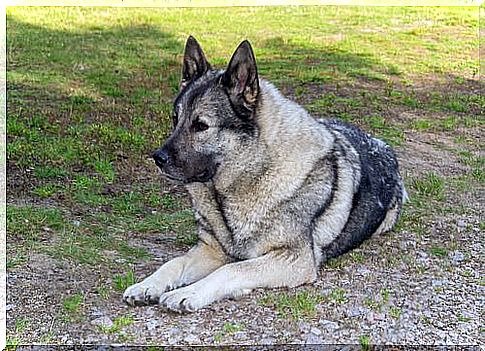
The Norwegian elkhound is a breed often used to hunt, graze or protect a piece of land. It is a versatile dog, with a great adaptability, which can be happy working in hunting or simply accompanying your family.
Due to its origins as an elk and bear hunting dog, it is a brave and tenacious dog, but it is also agile and energetic. With a dog with these characteristics, it is important to do physical exercises, but also mental exercises. In fact, a smart canine like the Norwegian elkhound needs to be given mental challenges to satisfy its work instinct.
He has the personality of the primitive races: they are stubborn but loyal and affectionate. He is sociable and forgiving of his human family, but may be suspicious of strangers and other dogs. Unlike other primitive races, such as the Norse, they will not hesitate to alert you to the presence of strangers with their barks.
This stubbornness, together with their great intelligence, makes it impossible to train this breed of dogs by force, according to the theory of dominance or applying punishments or pain.
However, they are very receptive to positive reinforcement. They have great determination when collaborating with humans, so the use of rewards and praise speeds up their training.
Norwegian elkhound care
The coat of the Norwegian elkhound needs proper care for a fur of its type, so it is advisable to brush it regularly to help remove any hair that is falling out.
Although it is a dog prepared to withstand sub-zero temperatures, it is also able to adapt to life in warmer countries. In this sense, your fur coat consists of a layer of superficial fur and a lower layer that helps to create an air chamber that protects you from the cold and heat. Therefore, you should never cut or shave a Norwegian elkhound’s fur.
In relation to their health, they usually don’t have many problems. However, like all large dogs, it is possible for him to develop hip or elbow dysplasia. Therefore, it is important to follow the veterinarian’s recommendations and the revision schedule to avoid inconvenience.
Finally, we must emphasize that the Norwegian elkhound is a breed that is thousands of years old, which also owes its survival to this day to its good personality, versatility and beauty.

